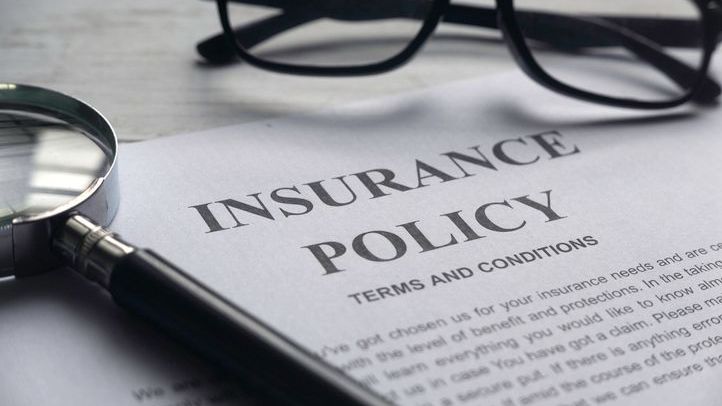Umbrella insurance and excess liability coverage both provide additional liability coverage beyond your existing insurance, but they serve distinct purposes and offer varying levels of protection. Umbrella insurance typically extends broader coverage across multiple policies, such as home and auto. Excess liability insurance, on the other hand, boosts the limits of a specific policy. Knowing the key differences between umbrella vs. excess liability insurance can help you make an informed decision about which type of coverage best suits your needs.
A financial advisor can help you evaluate your insurance needs and potentially find you a policy. Connect with a fiduciary advisor today.
Underlying Policy Basics
An underlying insurance policy is a primary insurance policy that provides the initial layer of coverage before any additional policies, such as umbrella or excess liability insurance, come into play. These policies serve as the foundation of your insurance coverage, offering protection up to a certain limit. When these limits are reached, umbrella or excess liability insurance can step in to provide extra coverage.
There are several types of underlying insurance policies that individuals commonly hold. These include homeowners insurance, which covers property and liability risks associated with owning a home; auto insurance, which protects against losses related to vehicle accidents and liability; and boat insurance, which covers watercraft-related risks. Additionally, personal liability insurance policies can also be underlying policies that offer coverage for various personal risks.
What Is Umbrella Insurance?

Umbrella insurance is designed to provide comprehensive protection that goes beyond the limits and scope of an underlying home, auto or other personal insurance policy. Umbrella insurance can cover a wide range of scenarios, including bodily injury, property damage, libel, slander and legal defense costs. This broad scope makes it a versatile option for holistic protection.
Umbrella insurance often offers protection globally, ensuring you are covered no matter where an incident occurs – which an underlying policy may not offer. Additionally, this coverage can extend to other members of your household, including your spouse and children, offering protection for the entire family.
How It Works
If you’re a homeowner hosting an event, and a guest trips on your uneven driveway, they could sue you and claim negligence. In this case, your homeowners insurance could cover up to a certain limit in liability, leaving you to cover the gap.
Fortunately, if you have an umbrella insurance policy, it could cover the remaining gap. Additionally, if the guest claims that you made defamatory statements during the event, which lead to emotional distress, the umbrella policy would cover those claims as well. This is different from standard homeowners insurance, which typically excludes defamation, libel or slander.
Coverage Limits and Costs
Umbrella insurance policies typically start at $1 million in coverage and can go up to $5 million or more, depending on your needs and the insurance provider. The exact amount of coverage you require will depend on your assets and potential risk exposure. Higher coverage limits provide more extensive protection against significant financial loss.
The cost of an umbrella insurance policy is relatively affordable when compared with the amount of coverage it provides, ranging from $200 to over $1,000 per year. However, the premiums can vary based on factors such as the number of properties you own, the number of vehicles you insure, and your personal risk profile. Despite the low cost, the peace of mind and financial protection offered by umbrella insurance make it a valuable investment.
What Is Excess Liability Insurance?
Excess liability coverage is a policy that provides additional limits of liability on top of an existing liability policy, such as auto or homeowners insurance. It essentially increases the limit of your underlying liability insurance without broadening the scope of coverage. It is particularly useful in situations where high claims might otherwise leave you vulnerable to significant out-of-pocket expenses.
How It Works
Excess liability insurance functions as a safety net that activates only after your primary insurance policy’s limits have been reached. For example, if your homeowner’s insurance covers up to $500,000 and a claim exceeds this amount, your excess liability policy would cover the remaining costs up to its own limit. This ensures that you are not left financially responsible for any claims that exceed your standard policy limits.
Coverage Limits and Costs
The coverage limits for excess liability insurance can vary widely, typically ranging from $1 million to $10 million or more, depending on the provider and your specific needs. These high limits are designed to protect against substantial claims that could arise from serious accidents, lawsuits or catastrophic events. It’s important to assess your personal risk and choose a coverage limit that adequately protects your assets.
The cost of excess liability insurance is also influenced by similar factors as umbrella insurance, such as the coverage limit and the specifics of the underlying policy. Generally, excess liability insurance is more affordable than umbrella insurance because it does not extend coverage to additional types of claims. The annual premium for a $1 million excess liability policy might range from $100 to $250.
Meanwhile, the average cost of a $1 million excess liability policy for a small business is approximately $480 per year, according to Insureon. However, those premiums will depend on coverage limits, location of the business, number of years it’s been operating and how many people the business employs.
Umbrella Insurance vs. Excess Liability Insurance

While both types of insurance aim to provide extra liability protection, there are notable differences between umbrella and excess liability insurance.
Coverage Scope
Umbrella insurance offers broader coverage compared to excess liability insurance. It not only extends the limits of your existing liability policies, like auto or homeowners insurance, but also covers claims that might not be included in standard policies, such as libel, slander, and invasion of privacy. In contrast, excess liability insurance strictly increases the liability limits of your existing policies without adding new types of coverage.
Flexibility and Usage
An umbrella policy provides additional coverage that can be applied across multiple underlying policies. This means it can offer protection for various aspects of your life, such as your home, car and even rental properties. Excess liability insurance typically applies to one specific policy, like your auto insurance or homeowners insurance, making it less versatile in terms of coverage application.
Cost Considerations
While both types of insurance serve to provide extra liability protection, umbrella insurance generally tends to be more cost-effective for the amount of coverage and the breadth of protection it offers. Excess liability insurance, while potentially less expensive upfront, might not offer the same comprehensive coverage, which could lead to higher out-of-pocket expenses in the event of a claim that isn’t covered.
Legal and Administrative Differences
Umbrella insurance often comes with fewer restrictions and more straightforward claims processing due to its broader nature. Excess liability insurance, being an extension of a specific policy, follows the same legal and administrative rules as the underlying policy. This can sometimes result in more complex claims procedures and potential gaps in coverage if the underlying policy has limitations.
How to Choose Between the Two
To decide between umbrella insurance and excess liability insurance, start by evaluating your coverage needs. Consider the assets you need to protect and the level of risk associated with your lifestyle. If you have significant assets or high-risk activities, you might require broader coverage.
Examine the coverage limits of your existing policies. Umbrella insurance typically provides broader coverage across multiple policies, such as home and auto, while excess liability insurance extends the limits of a single underlying policy. If you need additional coverage for multiple areas, an umbrella policy might be more beneficial.
Review the exclusions and conditions of both types of insurance. Umbrella policies often offer more comprehensive protection with fewer exclusions, whereas excess liability policies might have more specific limitations. Ensure that the policy you choose does not exclude critical risks you need coverage for.
Finally, compare the cost and overall value of each option. While umbrella insurance might be slightly more expensive due to its broader coverage, it could offer better value if you need extensive protection across various areas. Weigh the benefits against the costs to determine the best fit for your financial situation and risk profile.
Bottom Line
Umbrella insurance offers broader, more flexible coverage that extends across multiple policies, providing robust protection against a wide range of risks, including those not typically covered by standard policies. On the other hand, excess liability insurance increases the limits of a specific underlying policy, offering additional protection within the scope of that policy.
Tips for Buying Insurance
- Life insurance can play an important role in your financial plan, helping ensure that your loved ones are taken care of when you die. But how much coverage do you need? SmartAsset has a life insurance calculator designed to help you answer that question, as well as a quote tool to help you source potential policies.
- A financial advisor can help you assess your insurance needs and integrate your policies into a comprehensive financial plan. Finding a financial advisor doesn’t have to be hard. SmartAsset’s free tool matches you with up to three vetted financial advisors who serve your area, and you can have a free introductory call with your advisor matches to decide which one you feel is right for you. If you’re ready to find an advisor who can help you achieve your financial goals, get started now.
Photo credit: ©iStock.com/Mohamad Faizal Bin Ramli, ©iStock.com/champpixs, ©iStock.com/Pekic
